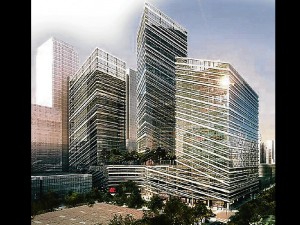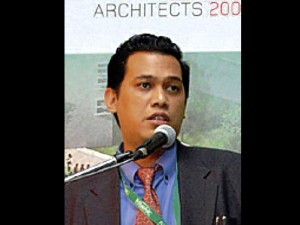THE STRING of recent natural disasters in various parts of the globe has forced the world to finally pay attention to the issue of climate change.
In the Philippines, which ranks 8th among countries considered most vulnerable to the adverse effects of climate change, people have started to become more aware of the need to address the environmental pheno-menon, especially after the devastation caused by the infamous storms Ondoy and Pepeng in 2009.
The Philippine Green Building Council (PGBC), a non-profit organization, is helping address the issue of climate change by encouraging the building sector go for environment-friendly buildings, and for policymakers and other concerned members of society to push for the same.
PGBC chair Christopher C. Dela Cruz explains that addressing climate change requires participation of the building sector. This is because, according to estimates, buildings contribute 40 percent of the world’s total carbon emissions, which directly cause climate change.
Climate change is defined as the increase in global temperature that causes sea levels to rise (as mountain glaciers melt), and that causes variability in the atmosphere that leads to more frequent and intense storms. It is primarily caused by carbon emissions, which result from various human activities.
The fact that awareness of the need for environment-friendly buildings has been increasing in the country is good news, Dela Cruz says.

ARTISTS’ perspective of the Net Lima Towers to be put up at the Fort Bonifacio Global City in Taguig.
Growing awareness is proven by the rising number of inquiries that PGBC is getting from industry players on how to design green buildings, as well as the move of universities to include subjects on environment-friendly designs in their architecture courses.
Moreover, there are pending bills in Congress seeking to promote environment-friendly buildings.
The bad news, however, is that the country is still in the awareness stage. He says the industry has yet to have a considerable number of players that are making their existing buildings turn green and/or are constructing new buildings that are environment friendly.
“Awareness is one thing, but actual practice is another,” he tells the
Inquirer in an interview.
How buildings can become green
“Green building” is defined as the act of designing, constructing, operating, and maintaining buildings in an environment-friendly manner.
Dela Cruz says there are various ways for buildings to become green. The most common is the use of energy efficient air-conditioning and lighting systems. For instance, he says, light bulbs used in stairwells could be those types that automatically dim in the absence of a person using the stairs.
Another way is the use of green roofs, which are roofs that have plants or vegetation on them so that less heat goes into the building and less energy is required for ventilation.
The use of solar panels, which are device that converts energy from the sun’s rays into electricity, is another means for a building to go green.
Efficiency in the use of construction materials, particularly steel, glass, and cement, is also key to becoming green. Dela Cruz notes that production of glass and steel requires very high temperatures and entails emission of significant levels of carbon into the air.
Moreover, he says, a ton of cement produced is equivalent to a ton of carbon emitted into the air.
Dela Cruz says glass, steel, and cement are materials that are indeed needed to construct buildings. As such, the industry cannot do away with using these in construction.
Nevertheless, he says, efficiency in their use is primordial to achieve the goal of being environment friendly.
“It’s not that we should not use cement, steel, or glass. We cannot construct buildings without those. What we are saying is that we should make more efficient use of these materials,” he says.
“For instance, in construction sites, workers and supervisors must be conscious about the need to avoid wastage of cement,” he says, noting that waste of cement is a common occurrence in construction sites.
Dela Cruz says use of wood obtained from well-managed forests, meaning, forests where trees that cut down are replenished, is also a way of becoming environment friendly.
Green rating system
To help the country graduate from the “awareness” to the “actual practice” stage as far as green building is concerned, PGBC has developed a rating system that will measure how environment-friendly buildings are.
The rating system, called the Berde, which stands for “building for ecologically responsive design excellence,” is relatively new, and PGBC wants as many industry players as possible to subject their buildings to this rating system and to seek for green certification.
Under the rating system, which uses various criteria, buildings being applied for green certification are assessed in terms of their environment-friendliness and are rated either 1 to 5, with the latter being the highest score. Buildings that do not pass the qualifications for environment-friendliness are not rated and are thus not given certifications.
PGBC has tapped the German firm Tuv Rheinland to serve as the certifying body for green buildings, and to use the Berde system in its evaluation and its process of issuing green certifications.
First green certified building project
Dela Cruz shares that there is one construction project taking place within the Fort Bonifacio Global City in Taguig that is expected to produce the first set of certified green buildings in the country. The project is owned by the NET Group of the Rufino family.
The project, called the NET Lima, includes the construction of three towers that will provide office spaces. Construction of the towers is being done in observance of the criteria of the Berde rating system.
One of the highlights of the towers is that the glass to be used shall be wrapped in aluminum brise soleil, which, Dela Cruz says, helps substantially reduce heat going into a building and thus helps save a lot of energy.
Why buildings should seek green certification
It pays for building owners to seek for green certification, says Dela Cruz. He says companies that are environment friendly enjoy a premium. Environment friendliness helps boost marketing of a company, he adds.
In this era when corporate social responsibility is given importance by the public, Dela Cruz says, companies that exhibit care for the environment are able to build better image before their clients.
On the perception that making buildings green is expensive, he says it just isn’t true.
Dela Cruz says that the cost of buying energy-efficient equipment and technology will eventually be covered by the savings from reduced consumption of energy and other resources.
Need to make green the norm
Being a country highly vulnerable to the ill-effects of climate change, the Philippines is encouraged to do concrete actions addressing it.
A study on climate change conducted by the World Bank shows that Metro Manila, given its low-lying cities, is vulnerable to more floods and that flood-related damages in the urban area could reach as much as $2.5 billion, taking into account infrastructure and properties.
Following the visit of Ondoy and Pepeng, the World Bank had estimated that the cost of the damages, and thus the cost of reconstruction and rebuilding, was $4 billion.
Dela Cruz says figures such as these should be an eye opener for Filipinos, especially since the Philippines is a middle-income country that does not have much financial capacity to afford the cost of reconstruction and rebuilding.
He says that the ill-effects of climate change are for real and so green initiatives, whether by members of the building sector and people outside of it, should be the norm.
“Going green is not anymore an option. It should be the norm; it should be what is business as usual,” says the green-building advocate.


